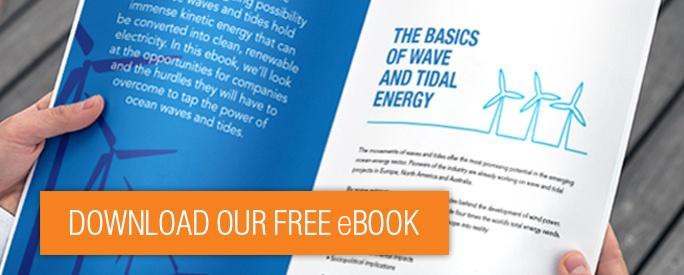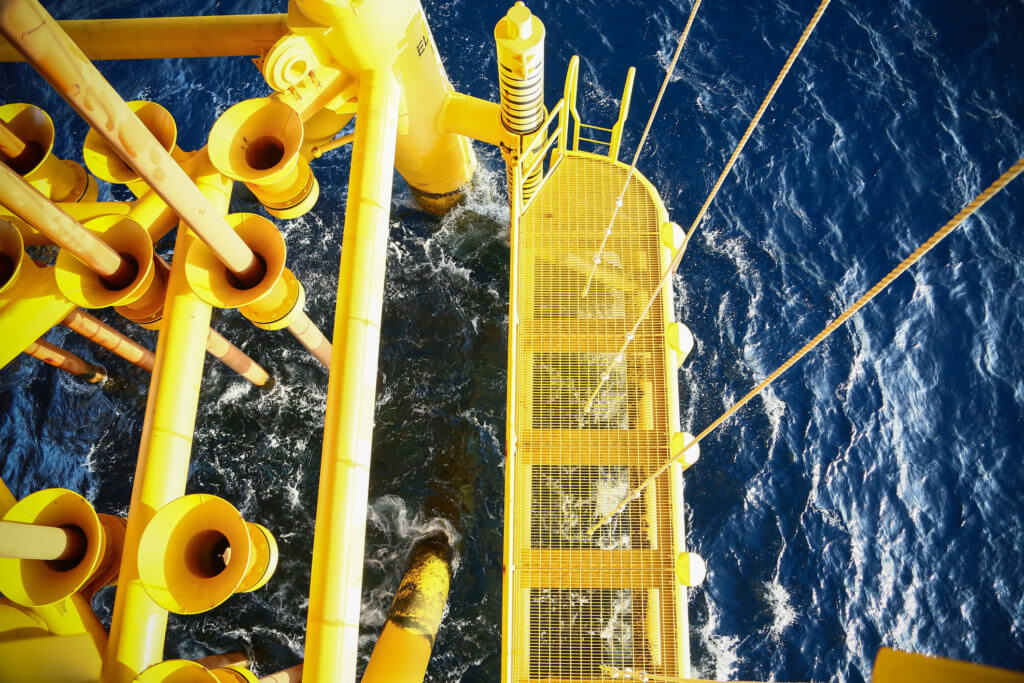Are floating platforms the future of marine renewable energy?
It’s hard to tell just yet. Floating platforms have been bulwarks of the oil and gas industries for decades. If we can use a floating platform to drill from the ocean surface down through kilometers of bedrock, how hard could it be to mount a wind turbine or other marine energy converter on a floating platform and transmit electricity back to the mainland on cables?
The engineers tackling this question have a lot to think about. Most of their debates will shape up along the pros and cons of floating platforms for marine renewable energy. Here’s a quick look at them:
Advantages of Floating Platforms
Invisible to landlubbers. Folks on land don’t have to look at floating platforms, which can be deployed beyond the horizon and protect precious ocean views. This makes offshore wind more politically palatable.
Simplified, flexible deployment. A floating wind turbine platform can be towed out to sea fully constructed. This could potentially be much simpler and less costly than the specialized ships required to deploy embedded wind farms. Note, however, that a special port facility would still be required for the construction phase, so it’s unclear how much savings this produces in the short run.
Greater water depths. Fixed offshore renewable energy projects work best in shallow water — typically less than 200 feet (61 meters). Floating platforms, by contrast, can be deployed in waters up to a half-mile deep (800 meters) or even more.
Stronger, more reliable winds. Near shore, moving air becomes much more turbulent and dispersed. A few miles out to sea, the winds are more powerful and reliable, generating much more potential electricity. At the same time, manufacturers are building ever larger wind turbines to catch more air — so it only makes sense that these be used on floating platforms.
Turbines can be swapped out. If a fixed wind turbine goes bad and has to be replaced, it’s an incredibly complex project. Floating platforms, by contrast, can be quickly and easily towed into place or removed.
Easier inspections and maintenance. This is most true with wave- and tidal-power systems that are deployed underwater. Fixed systems are much harder to inspect and repair than floating systems.
Disadvantages of Floating Platforms
Cost comparisons. Fixed offshore wind technology gets more mature every year, lowering total costs with each new innovation. As long as these costs keep falling, floating platforms will face daunting challenges in attracting investors.
Unsettled engineering. A few floating-platform systems are in the water, but not enough to provide a clear picture of the optimum platform. A standard platform that can be manufactured at scale will be required to produce the economies that make offshore platforms viable.
Environmental questions. Floating platforms require anchors on the seabed and connecting cables or chains that can disrupt offshore ecosystems. Though most biomes can adapt to the temporary construction disruption, there’s always the potential of creating artificial reefs that invite invasive species. The effects on migratory animals like whales and birds also are unknown.
Cable complexities. Extra-heavy-duty cables are required to fix floating platforms in place and endure the ravages of waves and saltwater. Suppliers in this space will need extensive experience in both deep-sea mooring lines and electricity transmission cables.
Don’t Discount the Potential of Floating Platforms
At PMI, we’re excited about the idea of adapting our decades of deep-sea cable experience to the needs of the marine renewables sector. It might not be happening as soon as we would prefer, but as long as nations around the globe establish benchmarks for tapping into the potential of renewable power, they’re going to keep looking to their shorelines — and beyond.
Related articles:
· Market Opportunities for Offshore Wind: What Does the Future Hold?
· Challenges in the Installation and Repair of Offshore Wind Turbines
· Subsea Cable Trade Group Widens Focus to All of Europe







